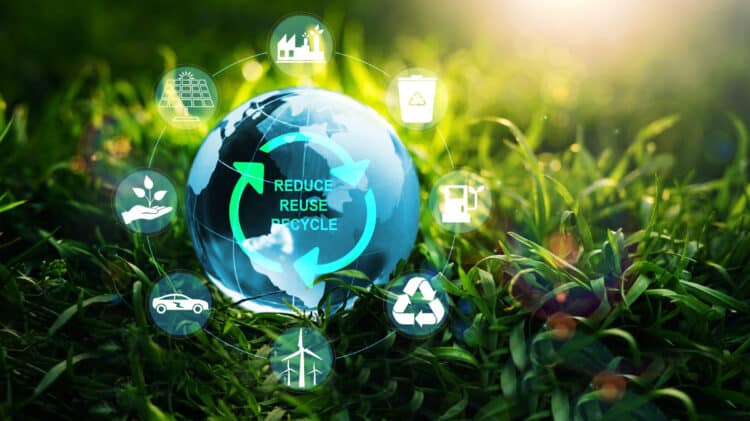
Sustainability – Still Our Shared Priority
Sustainability has been one of the most discussed topics in 6G since being identified as a key driver for research and developed in the world’s first 6G White Paper published by the Finnish 6G Flagship in 2019. After the first excitement of exploring newness, sustainability has turned out to be a challenging multi-disciplinary topic for communications engineers to grasp. What sustainability and sustainable development mean in the context of 6G continues to cause controversy and is regularly criticised for being fluffy without proper technical substance. Green communications, heavily studied in the 4G era to improve energy efficiency, is claimed to be enough in the absence of conserving the broader meaning of sustainability.
As stated in Gro Harlem Brundtland’s report “Our Common Future” in 1987, “sustainable development is development that meets the needs of the present without compromising the ability of future generations to meet their own needs.” Many relevant definitions, concepts, and frameworks have appeared ever since, including the crucial one – the United Nations Agenda 2030 for Sustainable Development (UN SDGs). The 6G Flagship’s White Paper on 6G and the UN SDGs from 2020 continues to be relevant, highlighting the information and communication technology (ICT) sector’s crucial role in this development.
Sustainability as the umbrella term became more tangible in the ICT sector when environmental, social, and economic sustainability perspectives were widely accepted as the key areas to explore in the European Smart Networks and Services Joint Undertaking (SNS JU) 6G project Hexa-X-II. The notions of “Sustainable 6G” and “6G for Sustainability” have appeared as a common wordplay to distinguish the ICT system’s sustainability impact and the impact stemming from using ICTs, which are different. Yet, the terminology around sustainability is underdefined, not to mention the methods to assess the environmental, social, and economic sustainability impacts.
Prior debate on energy efficiency was put into the proper context of environmental sustainability, with the much-needed distinction between energy efficiency and energy consumption. Improving the first does not necessarily lead to reducing the latter, which is the actual target. To this date, the ICT sector’s energy consumption has not decreased. Other environmental sustainability indicators have been highlighted, including greenhouse gas emissions, e-waste, recyclability, reparability, expected lifetime, water usage consumption, and toxicity, among many others.
Social sustainability is about the well-being of people, where topics like health, inclusion, security, and trustworthiness have received attention. Economic sustainability is about long-term growth while respecting environmental and social sustainability aspects, bridging the three sustainability perspectives together. Environmental, social, and economic sustainability perspectives are equally important in 6G and have trade-offs. Major environmental and social sustainability challenges related to value chains could be solved if money was not a constraint. However, ICT is about business.
Sustainability is a truly cross-cutting theme. Sustainable development and solving global challenges require a multi-disciplinary approach where terminology and research methods from one discipline do not directly solve the identified problems. It is not an easy task when a disciplinary background has required one to work in a certain way for decades, and the peer pressure on what is considered to be valuable is high. The same terms, such as sustainability, value, and resilience, can mean different things to different people, and disciplines have developed distinct definitions. There is a wide variety of research methods beyond simulations, measurements, and trials, which has become topical in European 6G projects in the debate around key value indicators (KVIs), which are hardly measurable with testbeds.
Global 6G definition work adopted sustainability as an overarching design principle in the global IMT-2030 framework recommendation adopted by the United Nations-based International Telecommunication Union Radiocommunication Sector (ITU-R) in 2023. This would not have happened without European regulators’ involvement in the process. Several big companies and countries tried to remove sustainability from the global 6G definition work and objected to it until the very last moment.
Europe continues along the sustainability path in its recent Strategic 6G Vision, published by the Radio Spectrum Policy Group (RSPG) in February 2025, with inputs from the research domain, including the 6G Flagship. Research and developments on sustainability and 6G continue in the European Smart Networks and Services Joint Undertaking (SNS JU) lighthouse project SUSTAIN-6G. Despite the global challenges of sustainability, the great thing about sustainability is that it is not an arena for competition between scholars and organisations. The only competition is against time. Will we make the necessary changes in time?
About the author

Director of Sustainability and Regulation